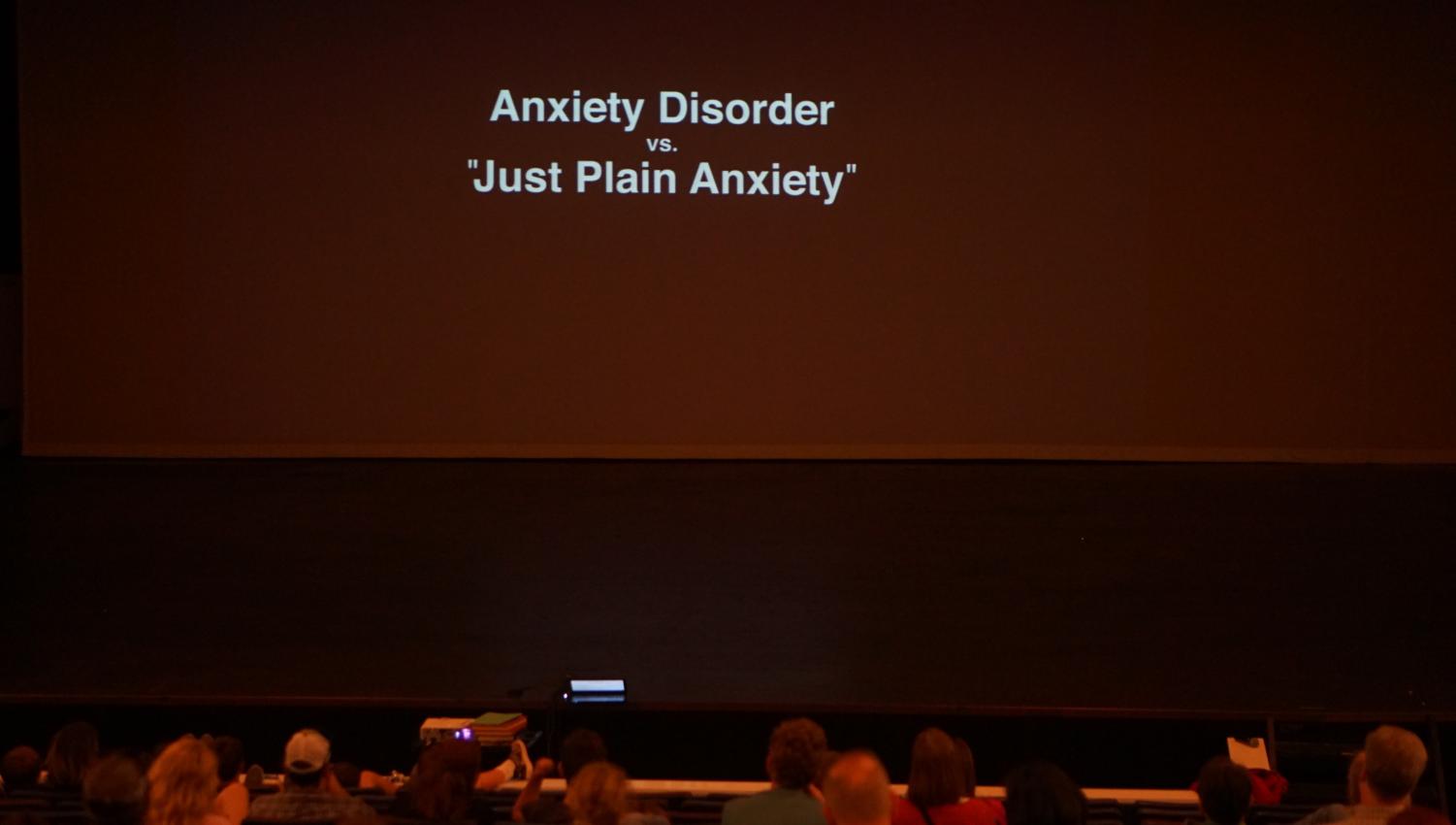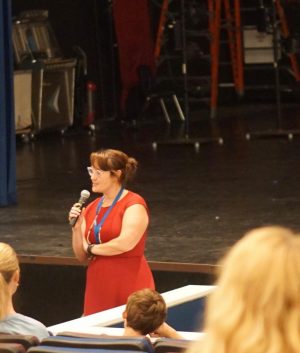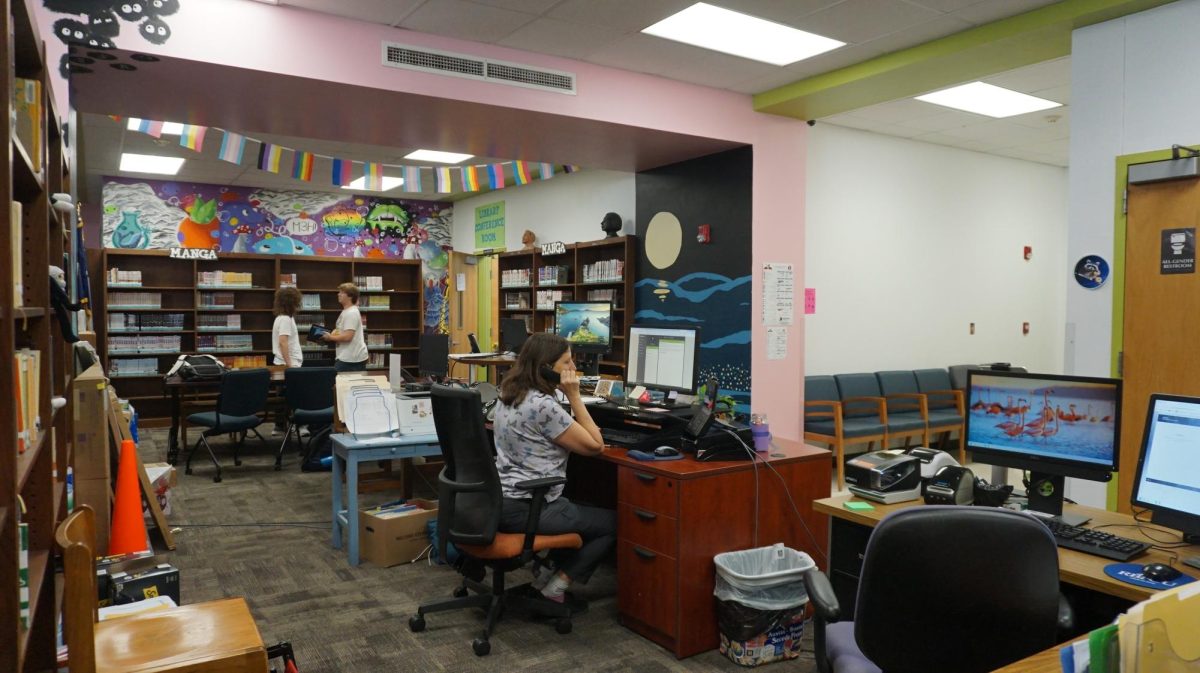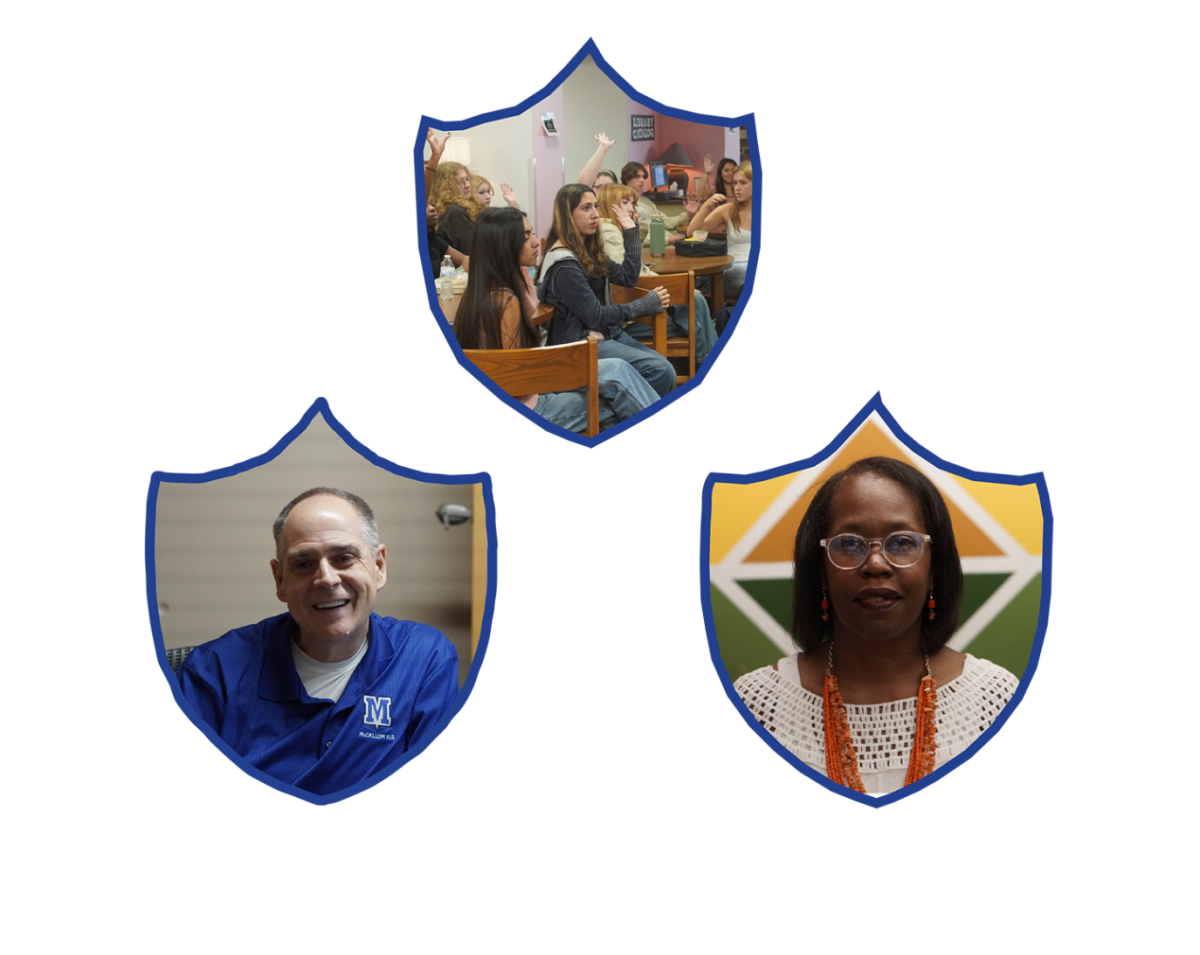
Ever since 1949, Mental Health Awareness Month in May has been a time for communities to discuss mental health issues and the causes and effects of mental illnesses.
McCallum took part in that tradition this year on May 7 when Angst was screened in the MAC. Angst is a short, informative film about anxiety disorders and their effects on youth. The film featured testimonies given by a multitude of youth about their struggles with anxiety disorders, the ways they could limit the effect of those disorders on their lives, and advice on how to deal with or help others deal with anxiety issues.
The screening was led by McCallum counselor Allison Hersh, who says she got the idea to screen Angst from other counselors who showed the film at their school. This event wa

“One of those parents’ company put up the money for it, a bunch of money, to buy the rights for the week,” Hersh said. “It was parents who are already volunteering time to support counseling at McCallum, they saw the need and went for it. We couldn’t have done it otherwise.”
Not only did the donation allow McCallum to screen Angst after school in the MAC, it also gave McCallum the rights to show it during class throughout the week, which a few teachers did in their health and physical education classes.
With many students, parents, and faculty watching Angst, the goal of the film, to raise awareness about anxiety, was achieved at McCallum.
Mental illnesses affect a large amount of teens in the United States. According to a survey done by the Journal of American Academy of Child and Adolescent Psychiatry, about one fifth of American teens suffer from a mental disorder at some point in their youth, despite this fact, only a few attempt to find help in combating their illness. That is why Mental Health Awareness Month is observed in communities across America, including Austin.
“Austin Child Guidance Center has workshops all month,” Hersh said. “The National Alliance on Mental Illness comes to schools for free, and they do assemblies, and talk to small groups of kids.”
Even though the National Alliance on Mental Illness will not be coming to McCallum this year, Hersh says that there are other ways to help fight against the effects of anxiety disorders.
“Try to be kind to each other, try to support each other, in testing, in our performances, in our finals, and with seniors who are transitioning,” Hersh said. “And try to continue to build a positive community and to let kids and families know that there are resources if they feel stuck.”
Hersh says her goal for McCallum students who struggle with mental illnesses is that they have somewhere in school where they know they can find support.
“Many kids find support with certain teachers on campus, even if it’s not traditional therapy,” Hersh said. “When we surveyed the students at the beginning of the year, most kids said that there’s at least one adult that they feel has their back and they feel comfortable talking to here at school. And really all you need is one. My hope for all kids at McCallum is that they have one person at least that they feel like they can talk to, and if they don’t, that they have at least knowledge and awareness of how to seek help and support either from a counselor, nurse, social worker, assistant principal, whoever it is. That they know how, and they don’t feel like they’re alone, and they don’t feel like there is no help.”
Hersh also believes that the entire McCallum faculty and administration is willing to help students in their battle against anxiety and mental illness.
“We don’t do this job because it pays well, we don’t do this job because it’s really chill, and really powerful in society,” Hersh said. “Everyone in this building is here because we care about kids’ education and mental health and character. I do think we have challenges of being a really big school. With 2000 kids, it’s easy to get lost in the shuffle, but hopefully, there is some place for everyone to belong.”







